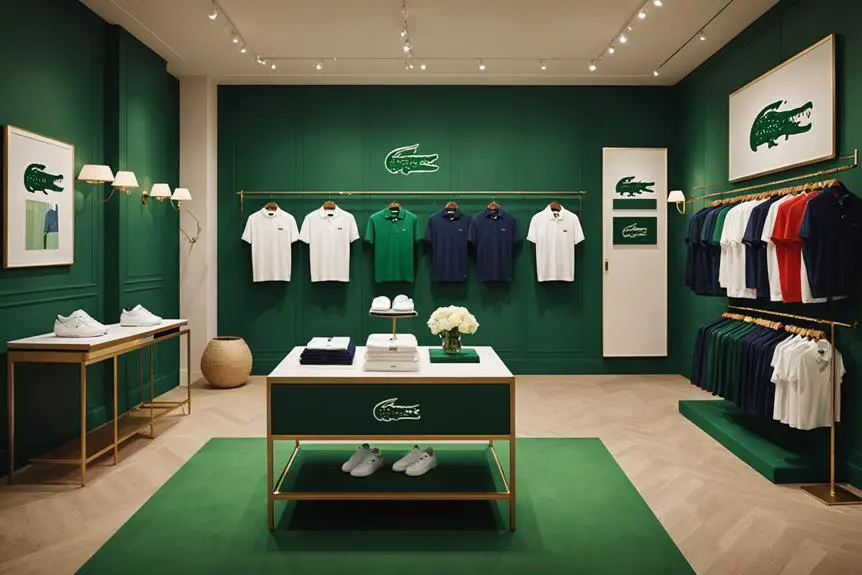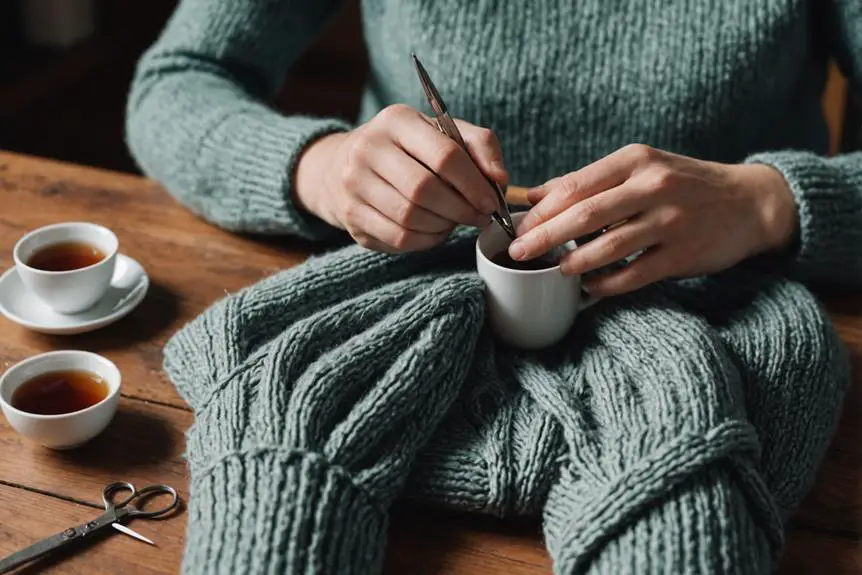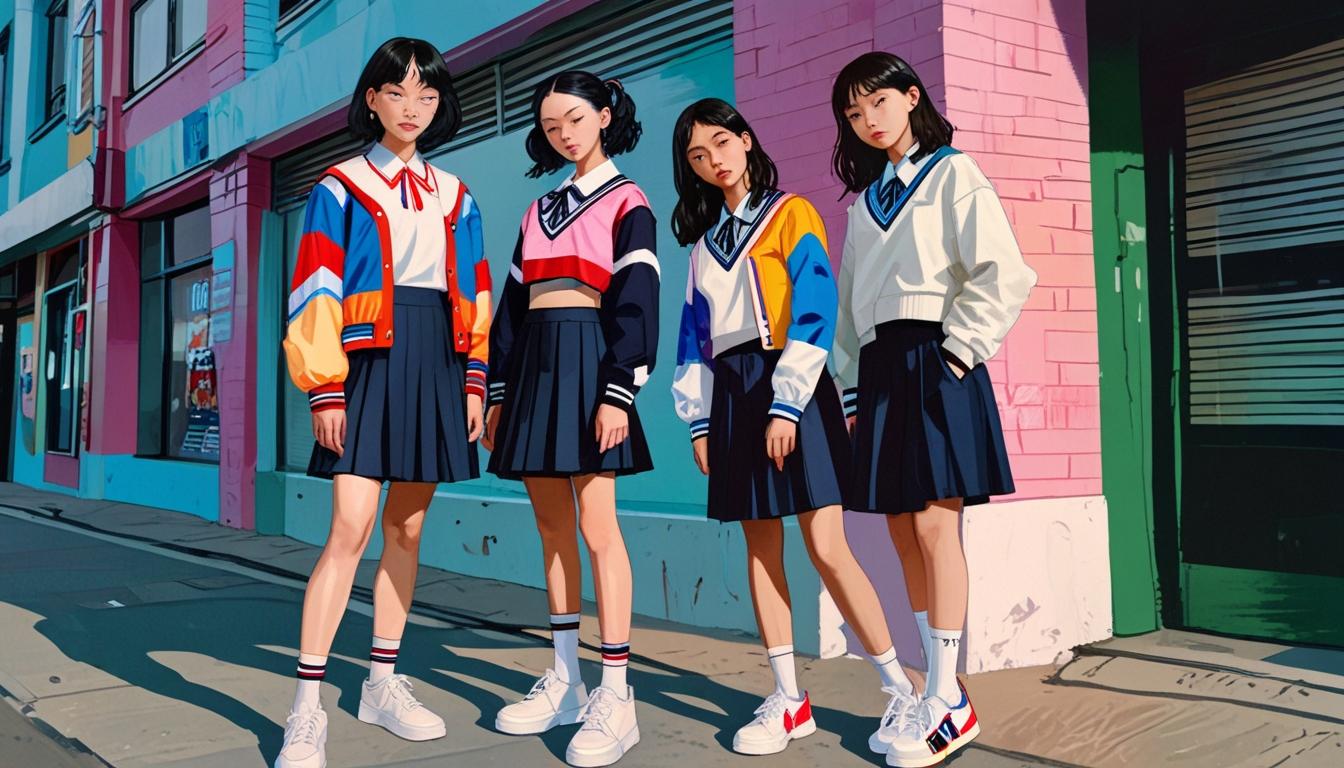When you consider the ownership of Lacoste, it's intriguing to note that the Lacoste family controls a significant 65% stake in Lacoste SA, which keeps the brand closely tied to its heritage. However, the remaining 35% is held by Maus Frères SA, a Swiss company that acquired the brand in 2005. This dual ownership raises questions about how a blend of family tradition and corporate influence shapes Lacoste's direction today. What does this mean for the brand's future, especially in an ever-evolving market?
Ownership Structure
The ownership structure of Lacoste showcases a unique blend of family heritage and corporate strategy. You might find it interesting that the Lacoste family holds a whopping 65% stake in Lacoste SA, which keeps the family legacy alive. After all, they've been involved since the brand first hit the scene in 1933. That's a long time, right? It really emphasizes how important heritage is to the brand.
But it's not just about family control. Maus Frères SA, a corporate giant led by Philippe Nordmann, owns the remaining 35% of Lacoste SA. They bought the brand for €1 billion (around US$1.3 billion) back in December 2012, which shows just how serious they are about the business. Through a subsidiary called Devanlay, Maus Frères manages and distributes Lacoste products worldwide, especially in the U.S., where they operate under a special licensing agreement.
Brand History
Founded in 1933 by French tennis champion Renée Lacoste and André Gillier, Lacoste started as a brand dedicated to tennis apparel. Can you imagine stepping onto the court in style? That's exactly what Renée had in mind, blending performance with fashion. With its iconic crocodile logo, Lacoste became the first brand to display its name on clothing exteriors. How cool is that? The brand's history is marked by its innovative approach to sportswear, which has evolved considerably over the decades, including a unique focus on identifying vintage items.
In the 1950s, Lacoste took a leap and partnered with Izod to produce clothing in the U.S. This partnership lasted until 1993, helping the brand gain popularity across the Atlantic. Over the years, Lacoste has evolved from its tennis roots, expanding into a wide range of clothing and accessories, all while maintaining solid footing in luxury markets around the globe. You might even spot the croc on everything from polos to chic handbags!
In 2012, Lacoste's journey took another turn when it was sold to Maus Frères for €1 billion (around $1.3 billion). This marked a considerable change in ownership, but the essence of Lacoste remains strong. It's amazing how a brand that started with a simple vision has become a household name in fashion. So next time you see that little crocodile, remember its rich history and the passion behind it. Isn't it fascinating how brands evolve over time? Keep an eye on Lacoste, because this brand isn't slowing down anytime soon!
Management and Strategy
While maneuvering through the competitive landscape of fashion, Lacoste has strategically positioned itself for growth under the ownership of Maus Frères SA. With Maus Frères holding a 35% stake through Devanlay, and the Lacoste family retaining 65% ownership of Lacoste SA, this ownership structure allows for a unique blend of innovation and tradition. You see, it's like having the best of both worlds!
Philippe Nordmann, at the helm of Maus Frères SA, is steering the ship with a clear management strategy. He's focused on expanding Lacoste's product lines and enhancing its international presence. Can you imagine a brand that started as a simple polo shirt now reaching around the globe? It's impressive!
Devanlay plays a crucial role here, acting as the global manufacturer and distributor for the Lacoste brand. With them on board, the quality and representation of Lacoste remain consistent everywhere. That means you can trust your Lacoste gear, whether you're in Paris or Peoria!
Partnerships and Collaborations
Innovation thrives at Lacoste through its strategic partnerships and collaborations, which not only enhance the brand's appeal but also connect it to contemporary culture. You might be surprised by how Lacoste has embraced modern fashion, making it more relevant than ever. They've teamed up with some big names, and let's take a closer look at a few of these exciting partnerships:
- Lacoste x Minecraft: In March 2022, Lacoste launched an apparel line featuring a pixelated crocodile logo, bringing a playful twist to classic styles like polos and hoodies. Who knew video games could inspire fashion?
- Supreme Collaborations: Lacoste has paired with Supreme multiple times, creating buzzworthy clothing collections from 2017 to 2019. These co-branded pieces not only caught attention but also boosted Lacoste's presence in streetwear.
- Athlete Partnerships: By collaborating with tennis stars like Novak Djokovic and Arthur Fils, Lacoste connects with sports fans and showcases its sporty heritage. It's a win-win!
- Creative Collaborations: Lacoste is expanding its reach to younger audiences by partnering with musicians and artists. This modern approach keeps the brand fresh and exciting.
Through these partnerships and collaborations, Lacoste is not just selling tennis apparel; it's crafting a lifestyle that resonates with today's culture. So, whether you're a fan of sports or street fashion, there's something for everyone in Lacoste's vibrant lineup!
Controversies and Challenges
Lacoste has faced its share of controversies and challenges over the years, which have put its brand image under scrutiny. You might remember the buzz in 2011 when Greenpeace called out Lacoste for pollution issues from its suppliers in China, raising eyebrows about the brand's environmental practices and questioning its commitment to sustainable practices, as highlighted in the brand's recent developments. Then, in March 2020, things got even trickier when the Australian Strategic Policy Institute linked Lacoste to forced labor in Xinjiang. Talk about a public relations nightmare! Thankfully, Lacoste acted quickly and cut ties with all suppliers in that region.
But that's not all. Remember the uproar in December 2011? Lacoste faced backlash for censoring the work of Palestinian artist Larissa Sansour. This incident didn't just spark outrage—it also highlighted the ongoing debate about corporate influence in the arts. People started questioning how much power brands should have over artistic expression.
With all this negative publicity, it's no wonder that Lacoste's reputation has taken a hit. The brand has struggled to shake off concerns about environmental issues and human rights violations. When you think about it, every time you see that iconic crocodile logo, you might wonder what it really stands for. So, how do you feel about supporting a brand that's been in the hot seat? It's a big question, and it's up to you to decide if Lacoste can bounce back from these challenges.
Future Outlook
As Lacoste looks ahead, the brand's future is largely shaped by its ownership under Maus Frères, which acquired it for €1 billion in December 2012. This partnership sets the stage for exciting developments, and you can expect some big changes. With Maus Frères at the helm, Lacoste is gearing up for brand revitalization and aiming to enhance its market position. So, what can you look forward to?
- Expanded Product Lines: You'll likely see more diverse offerings, from clothing to accessories, keeping things fresh and relevant.
- Increased International Presence: Lacoste plans to reach more global markets, bringing that iconic crocodile logo to new fans everywhere.
- Heritage and Identity: They're committed to preserving the brand's unique identity while adapting to modern trends. You know the classic polo? Yeah, that's staying!
- Innovative Marketing Efforts: Expect some clever campaigns that not only catch your eye but also resonate with younger audiences.
With the Lacoste family holding a 65% stake, there's a blend of tradition and new ideas. Maus Frères is all about keeping the spirit of Lacoste alive while pushing for growth. It's an exciting time for the brand, and if you love Lacoste, you're in for a treat. So, get ready to see how they turn these plans into reality!
Frequently Asked Questions
Who Owns the Lacoste Brand?
You'll find the Lacoste brand history fascinating, reflecting its iconic logo significance. Its marketing strategies effectively target a sporty, upscale audience, blending heritage with modern trends to resonate with consumers seeking style and comfort.
Who Is Lacoste Made By?
Lacoste's legacy lies in its luxurious lifestyle products, crafted with care. You'll discover Lacoste history intertwined with innovative collaborations, clever marketing, and a commitment to quality, ensuring every piece reflects the brand's enduring elegance.
Are Crocs and Lacoste the Same Company?
No, Crocs and Lacoste aren't the same company. While Crocs focuses on footwear trends, Lacoste emphasizes luxury apparel. Their distinct brand perceptions highlight different markets, though collaborations occasionally spark interest among fans of both brands.
Is Lacoste Considered a Luxury Brand?
You'll find Lacoste's luxury perception aligned with its brand positioning, appealing to affluent consumer demographics. Recent market trends show a shift towards premium offerings, solidifying Lacoste's status as a sought-after luxury brand in contemporary fashion.





I am glad to be one of many visitants on this outstanding web site (:, appreciate it for posting.